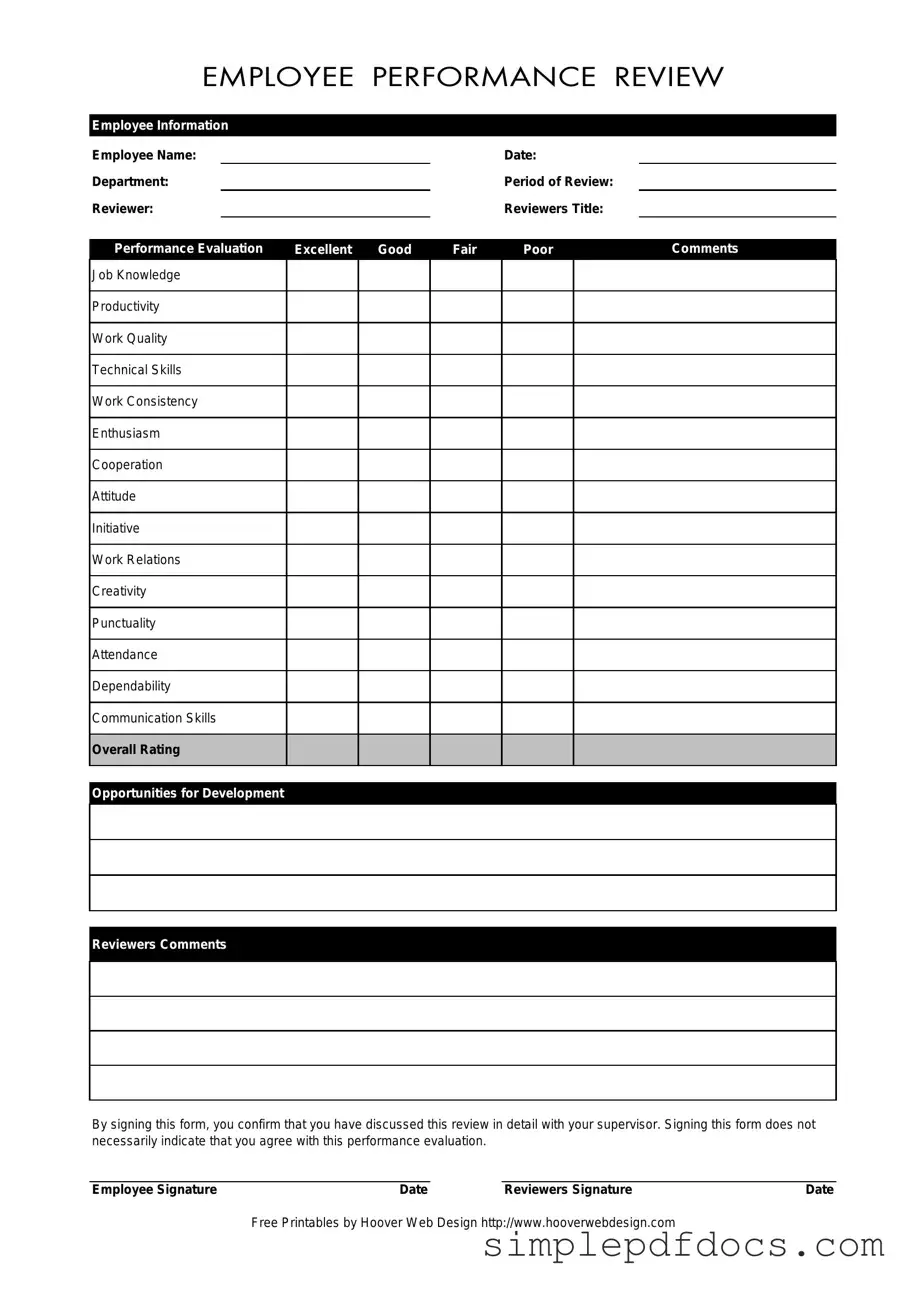The Employee form serves as a crucial tool in the performance evaluation process, providing a structured way for supervisors to assess various aspects of an employee's work. This form captures essential employee information, including the employee's name, department, and the period under review, ensuring that all evaluations are organized and relevant. The reviewer, who is responsible for completing the evaluation, includes their title, which adds context to the feedback provided. The performance evaluation section rates the employee across multiple categories such as job knowledge, productivity, work quality, and communication skills. Each category is rated as excellent, good, fair, or poor, allowing for a clear and concise assessment of the employee's strengths and areas for improvement. Additionally, the form encourages reviewers to provide comments that elaborate on the ratings, fostering a more detailed understanding of the employee's performance. Opportunities for development are also highlighted, emphasizing the organization's commitment to employee growth. By signing the form, both the employee and the reviewer acknowledge that the evaluation has been discussed in detail, although the signature does not imply agreement with the assessment. This element ensures that employees feel heard while maintaining the integrity of the evaluation process.
